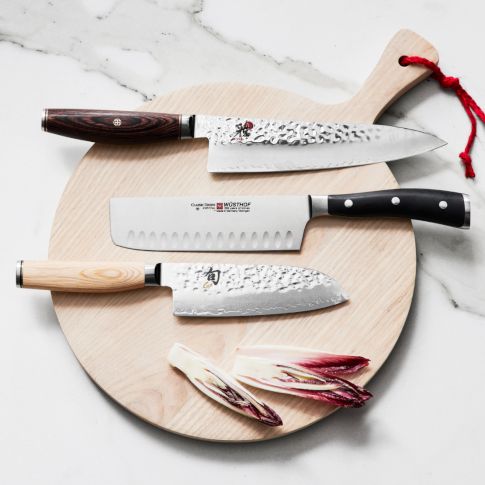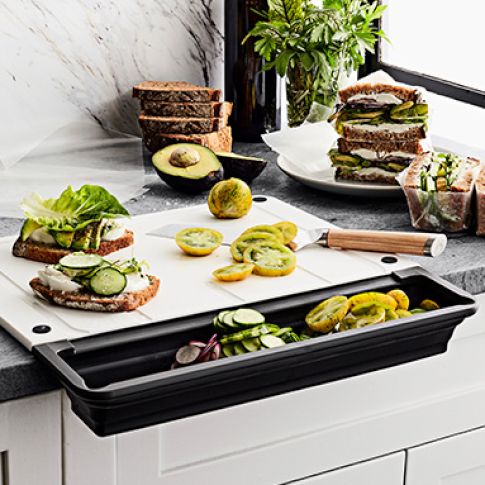Related Categories
Ceramic Knives
Add some extra longevity to your cutlery set collection with a durable, reliable ceramic knife. The knives we offer are renowned for their ability to stay sharp, with no need to hone or sharpen for months or even years with proper maintenance. Ceramic knives can be great additions to your diverse collection of kitchen cutlery from us at Williams Sonoma, but it’s helpful to learn a bit more about what ceramic knives can do before you choose a new design to try.
About Ceramic Knives
As their name indicates, ceramic knives use hard ceramic rather than metal for their blades. You might think of ceramic as a fragile, delicate material, but that isn’t the case with these tools. The ceramic used to make knives is fired at extremely high temperatures and is sturdy to hold its shape well. As a result, ceramic knife blades can stay much sharper than metal knife blades, which can be a major bonus if you like to spend less time maintaining your knives. However, this durability and ability to maintain a sharp blade with minimal maintenance doesn’t mean that ceramic knives are unbreakable. These knives also do need sharpening on occasion because blades can dull over time, and you’ll want to use a specialized ceramic sharpener to do the job.
The benefits of using a ceramic knife are numerous, though. These knives are great for most food-prep purposes. A ceramic chef’s knife can act as an all-purpose blade, performing the duties of everything from a paring knife to a carving knife. However, remember that ceramic knives are quite hard, and that means they generally aren’t very flexible. You still may not want to substitute them for knives that need to bend and flex a bit, like a boning knife. Ceramic is ideal for chopping and slicing tasks. This includes slicing soft foods such as tomatoes and bread – serrated ceramic knives are available, too.
Caring for Your Ceramic Knives
The most helpful way to maintain your ceramic knife is to treat it with care. Though ceramic can go in your dishwasher, it’s still a good idea to wash by hand to avoid the knife knocking into other items during a wash cycle. You also want to avoid dulling the blade by pressing it against hard surfaces. Use a soft cutting board made from wood or plastic rather than stone or glass, and use a metal knife to cut foods with hard pits or bones. Think about storage, too; place your ceramic knife in a block instead of loose in a drawer, and remember that it can’t adhere to a magnetized knife strip. A knife block or other purpose-built knife storage tool is a helpful choice for keeping your ceramic knives easily accessible and protected.
Ceramic knives aren’t magic, but they come close! Their ultra-sharp, thin blades allow for precision cutting and don’t require the same level of upkeep as metal knives. Now that you know more about caring for these useful kitchen tools, you can pick out the ceramic knives that fit beautifully with your cooking style and choose some accessories to help keep them in good shape for years to come.




